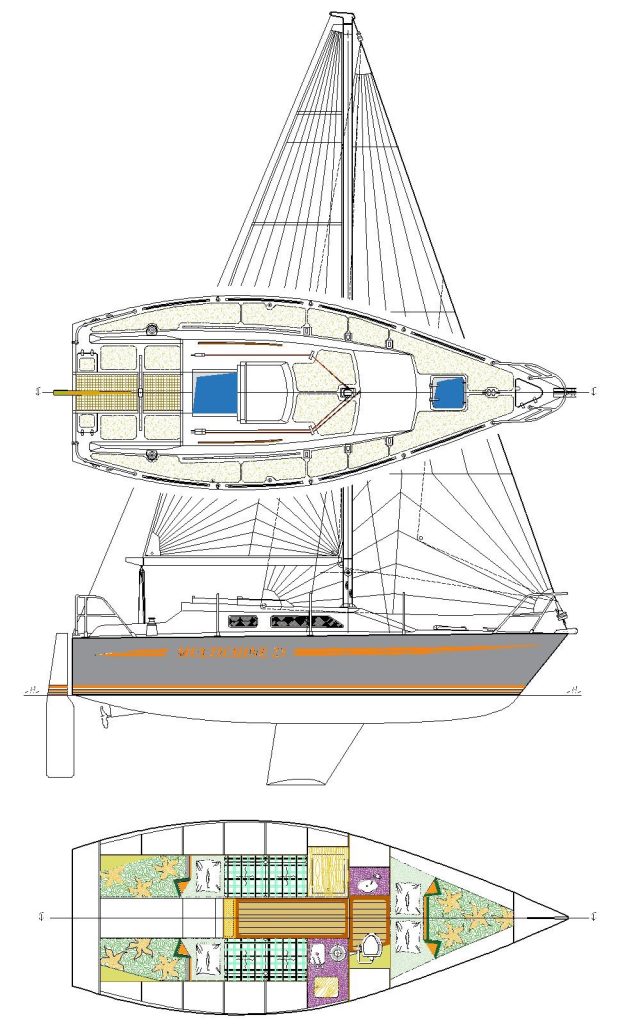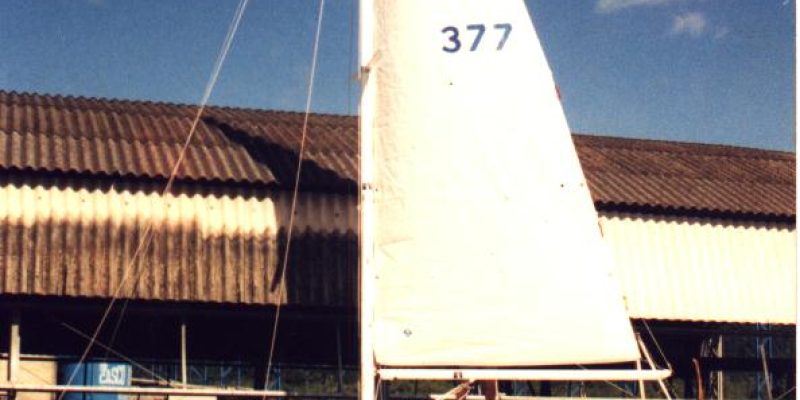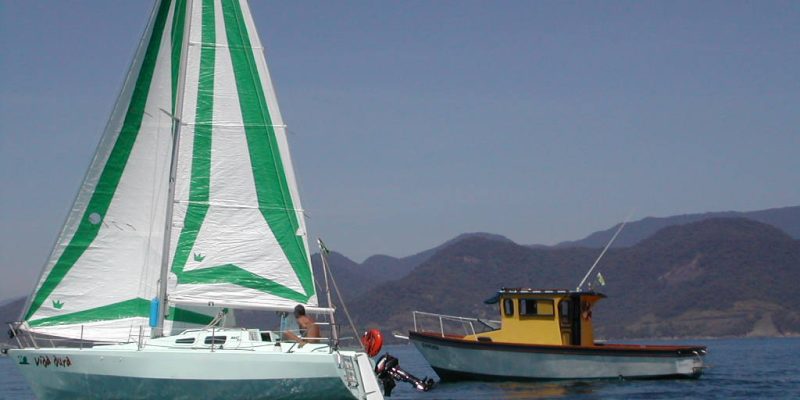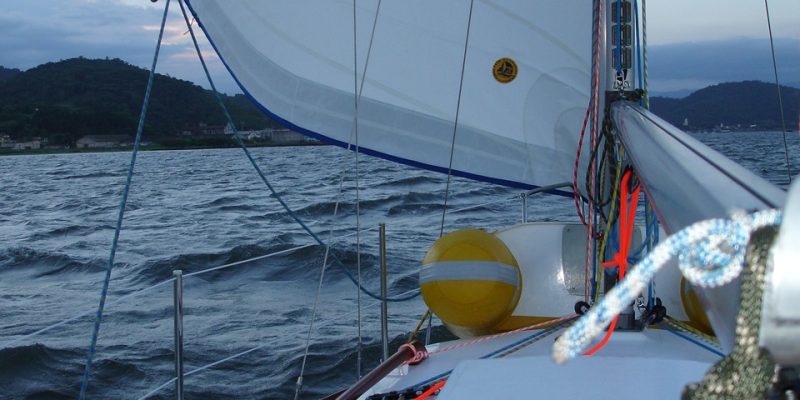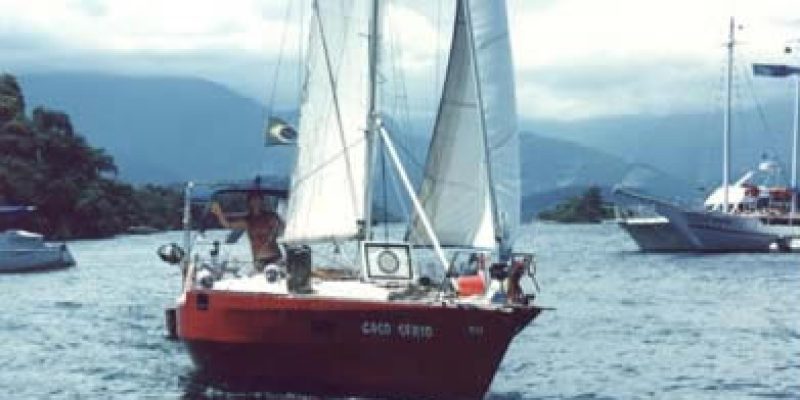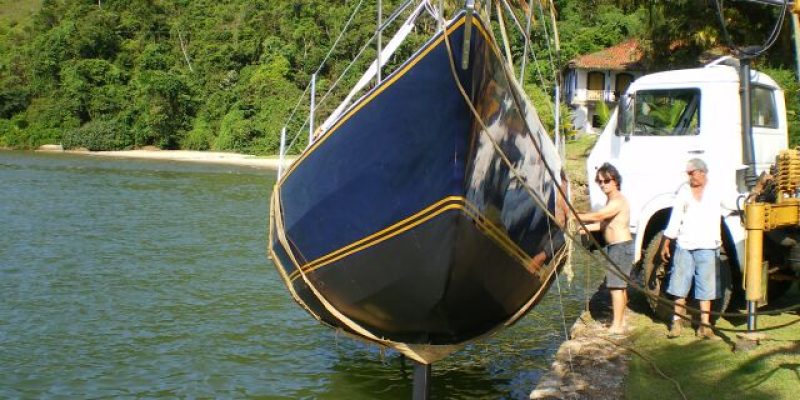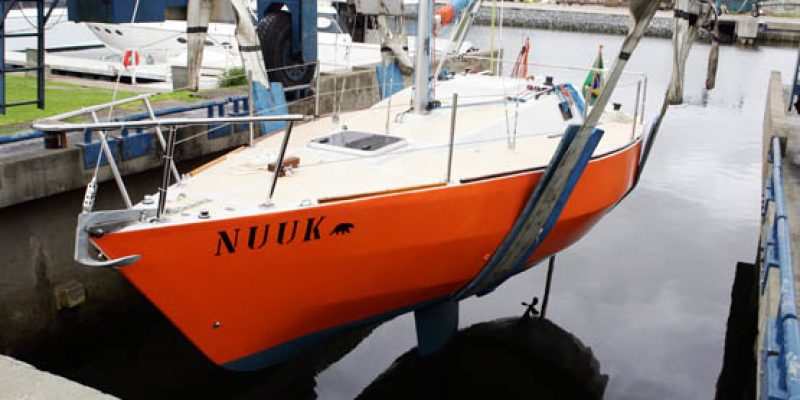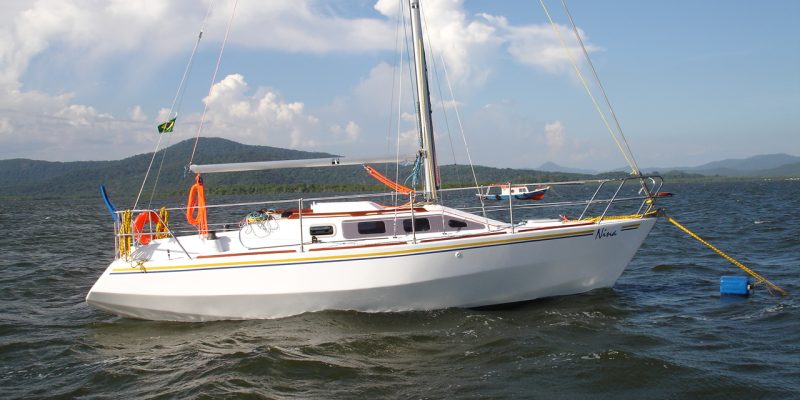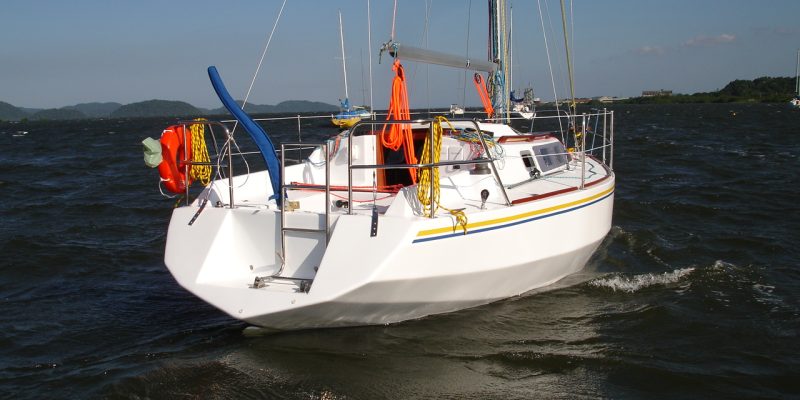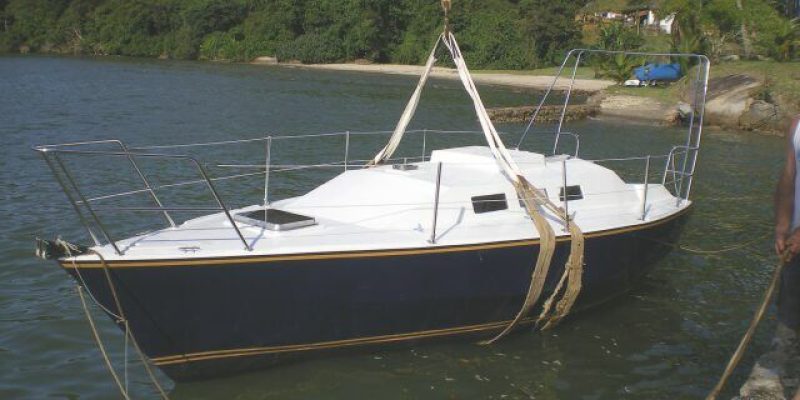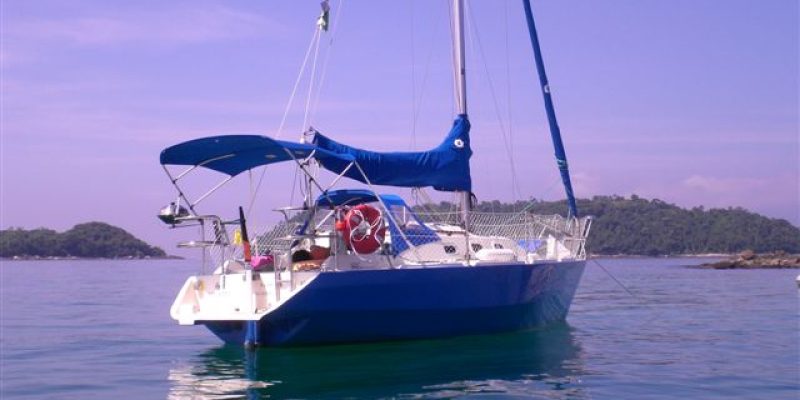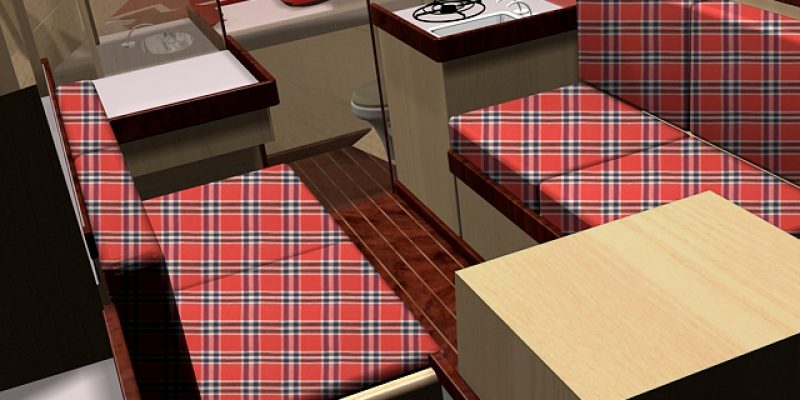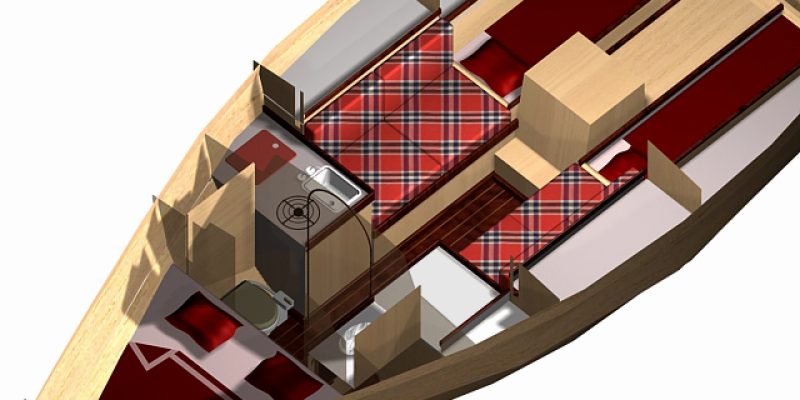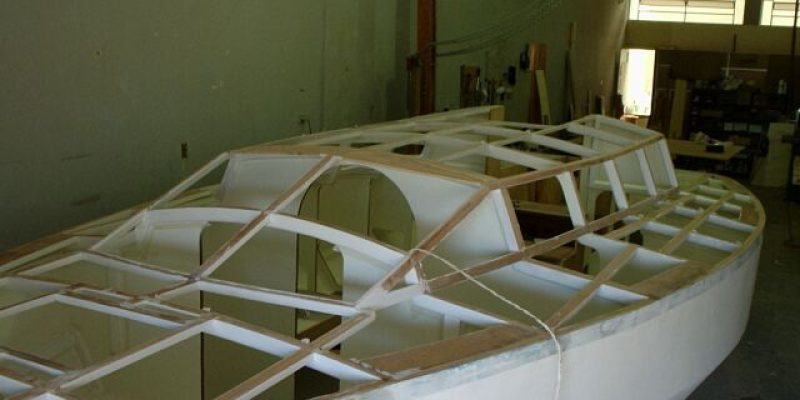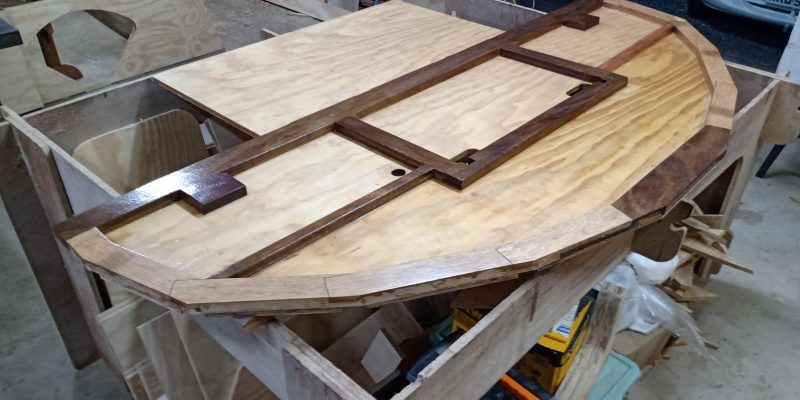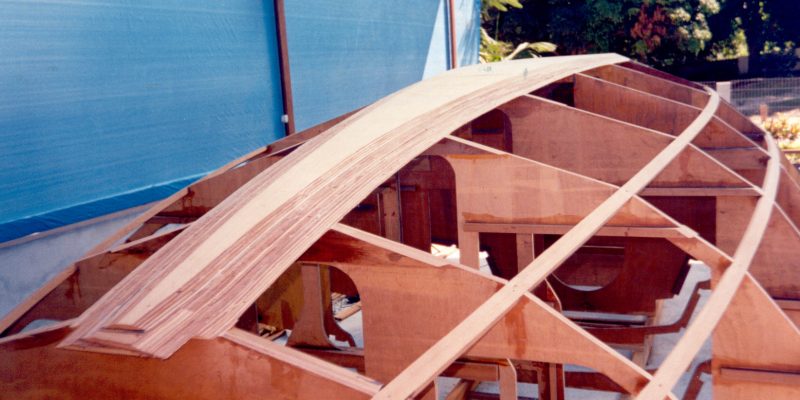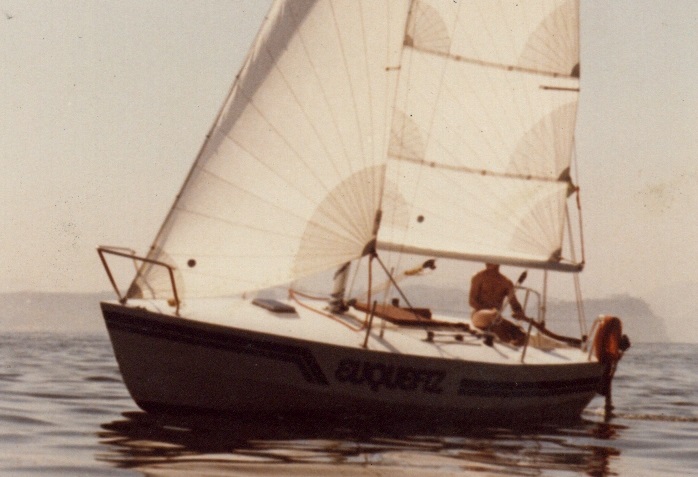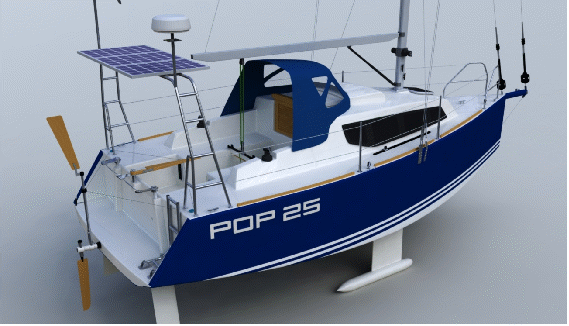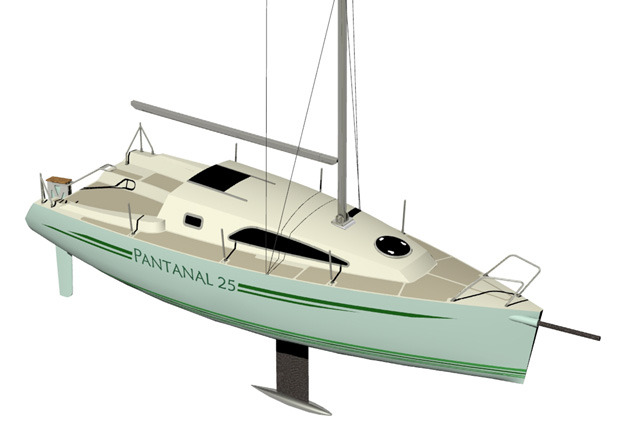Boat Plans - Multichine 23
Strong and efficient cruising sailboat, designed for amateur construction.
The Multichine 23 was a breakthrough in the amateur boat construction. Introduced in the nautical market in the late seventies, this design became a new pathway to a strong and efficient cruising sailboat.
The building method applied consisted in the production at the working bench of eleven plywood bulkheads or semi bulkheads, and for that purpose full-scale patterns were provided.
Once completed, these transverse bulkheads were assembled over bearers and keel chines and stringers kept them in place. A thin layer of plywood was then nailed and glued over this structure.
Next step was the application of a thick layer of fiberglass encapsulating the whole hull.
This innovative method basically offered the advantages of fiberglass-reinforced plastic and the cosiness of a wooden interior, dispensing the utilisation of expensive moulds. A thorough impregnation with epoxy had to be applied internally to prevent rot.
This method was a boom for the do-it-yourself builder and dozens of Multichines were built in a very short time. Multichine plywood hulls already existed, but the first Yacht design team to apply a thick layer of FRP over thin plywood was our office.
When the first units started to sail, their owners discovered that they had built a hot machine. The boats were so good performers that many of them started to participate successfully in club racing despite the cruising priorities of the design, and from then on, the fame of the class never stopped to increase.
This astonishing success was a good reason to keep updating the plans altering design details that could be improved and adding new fashions that became a must in sailboat design evolution since the introduction of the plans.
The first significative alteration performed in the design was the enlargement of the transverse after sections, in an alteration labelled as MKII. The maximum beam was large enough, with its impressive width of 2.81 m, but the transom wasn’t so large. With this modification the boat looked larger and sailed faster still, and the next claim of our would-be clients, was for an increase in headroom. So, we introduced the MKIII version of the class, applying a handsome wedged cabin trunk over the original flushdeck configuration. The response of the public for this new version was instantaneous, and a new wave of builders came to acquire the plans.
But we still wanted more and here’s the MKIV version to give a long life to the plans, attracting newcomers for the many years to come.
Technical Data
Length Overall (excl. rudder)
7.20 m (23′ 7″)
Length Waterline
6.34 m (20′ 10″)
Beam
2.81 m (9′ 2″)
Draft (fin keen)
1.48 m (4′ 10″)
1.28 m (4’ 2”)
Ballast
750 kg
Displacement
2000 kg (4400 lb)
Fresh water capacity
180 l (48 gal)
Standing Headroom
1.64 m (5′ 5″)
Sail Area
25.9 m2 (279 sq. feet)
Auxiliary Propulsion
14 hp
Construction
Plyglass
List of Plans
MC23 – S0A – Full Size Patterns A
MC23 – S0B – Full Size Patterns B
MC23 – S0C – Full Size Patterns C
MC23 – S0D – Full Size Patterns D
MC23 – S0E – Full Size Stem
MC23 – S1 – Lines Plan
MC23 – S2 – Mast and Sails
MC23 – S3 – Interior Layout
MC23 – S4 – Deck Layout
MC23 – S5 – Construction Plan
MC23 – S6A – Transverse Sections
MC23 – S6B – Plywood cutouts
MC23 – S7A – Bulbous Keel
MC23 – S7B – Finn Keel
MC23 – S8 – Custom Fittings
MC23 – S9 – Engine Installation
MC23 – S10 – Boarding Platform
Boat Description
To explain the victorious career of this design we must describe in detail how the Multichine 23 was conceived, regardless of the updates.
First of all, the Multichine 23 has a comfortable inside layout, be it when sailing in good or bad weather, or when at anchor. Two quarter berths join with the cabin sofas in a 3 m – (9’6″) long cushioned seat-berths going from the mid-section almost to the transom, more than half of each under the coach roof. The beauty of this arrangement is the fact that two adults can sleep when sailing close hauled without the need of leeboards, and they are placed where the motion is minimum. In the saloon, not disturbing who is using the quarter berths, there is room for four persons to seat comfortably.
The galley is placed forward of these seat-berths side by side with a large navigation table. A bulkhead separates the head from the central part of the cabin. With sink, vanity unit and toilet, and going from port to starboard, there is still place for foul weather clothes locker to starboard and another locker with a door at the port side. A good double berth forward, served by the forward hatch is welcome on summer nights when one can go to sleep looking at the stars.
The emphasis in the deck layout is a comfortable and protected cockpit. The hinged rudder blade is a cost saving and simple solution. The fore and side decks are ample and unobstructed.
The mast stepped on deck with a pair of lower shrouds and single spreaders is the simplest and safest rig possible. A generous sail plan still very easy to handle single-handed ensures a good performance in light winds.
The fin-keel is offered in two versions. A deeper draught fin and a shallow one with a bulbous tip. In both cases the stability is high ensuring blue water capability to the design. With large tank capacity, either for water or diesel, a well-built Multichine 23 is capable of going anywhere.
Browse Gallery
See Related Plans

